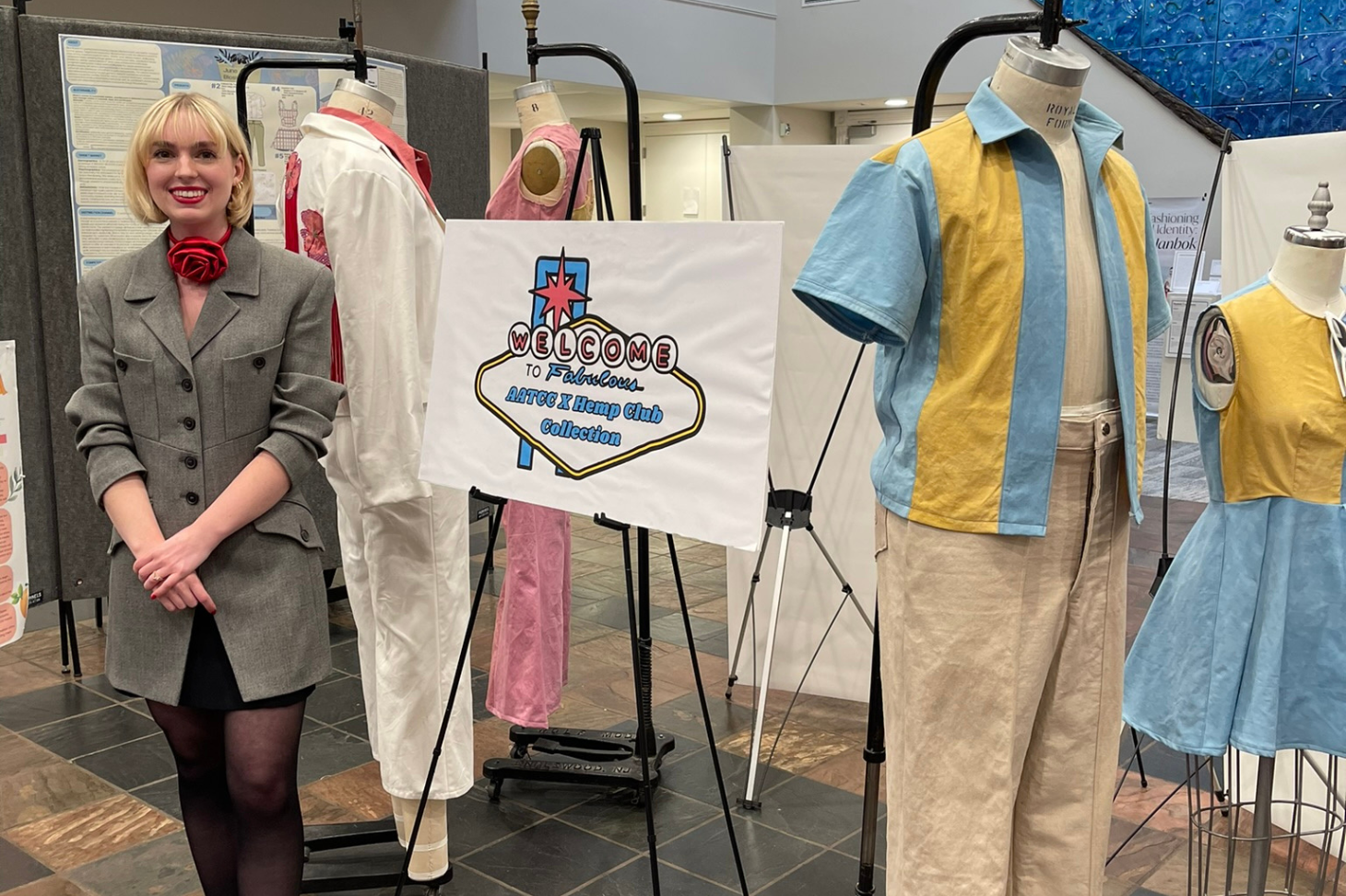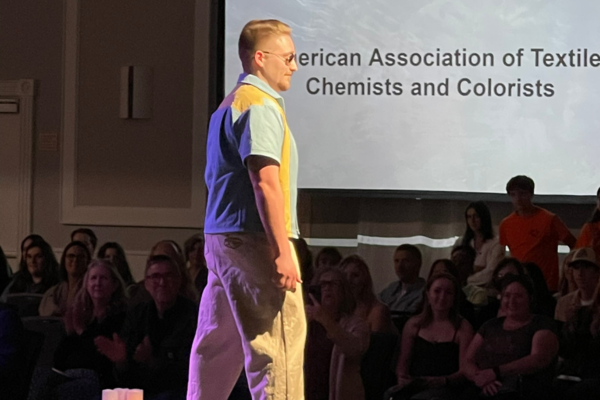News, articles, and interesting stuff from the College of Business
Collab allows apparel and design students to create fashion from hemp fabric

Story by Theresa Hogue
Students in an apparel design club at Oregon State University have created a line of Rat Pack-worthy vacation wear made from naturally dyed hemp fabric, as part of a collaboration with the OSU Global Hemp Innovation Center. The outfits were showcased last month at the College of Business Design and Merchandising Exhibition and Fashion Show.
Jeffrey Steiner, director of the OSU Global Hemp Innovation Center, was interested in working with apparel students to promote the use of hemp fabric in clothing and showcase its potential. The center provided students with grant money to purchase hemp fabric, and the OSU chapter of the American Association of Textile Chemists and Colorists Club took on the challenge.
“I am very pleased seeing efforts like this advance opportunities for utilizing hemp,” Steiner said. “It is great to see more faculty getting engaged with hemp and incorporating hemp into their curriculum and projects.”
The AATCC Club at Oregon State University has 14 members and is advised by Brigette Gaal Cluver, a senior instructor in merchandising management and apparel design. The club decided to base the collection on the prompt ‘vibrant vacation.’
“The club met and made mood boards and sketched and came up with different locations, and finally landed on Las Vegas, so they decided to go with a retro Las Vegas vibe” said Gaal Cluver.

Student Lucas Mazurik said they were looking for a simple but classy aesthetic. “We were inspired by vintage bowling shirts and wide legged trousers that were common in the 60-70s era, we wanted our look to be the perfect outfit for the bowling alley or a night out on the Vegas Strip.”
Jackson Flint was another student who worked on the project, and he was surprised at how easy hemp fabric was to work with.
“I did break a few needles sewing but it was definitely due to how many layers I was trying to sew. That is also what really surprises me, the fact that it can be so similar to cotton, at least in this case,” Flint said. “I have learned through my courses the properties of hemp, but actually getting the chance to work with it was awesome because I got to understand it a lot better than just reading about it.”
They came up with designs for four different outfits and selected a hemp fabric they thought would work well with their designs. That’s when Marianne Dickson, an apparel and design instructor, stepped in. The students approached her because of her expertise in using organic dyes on fabrics, and it fit with their plan to create sustainable clothing. It was Dickson’s first time working with the club, and she was excited to pair her expertise with their enthusiasm.
“We talked about what natural dyes look like especially on cellulosic (plant based such as hemp/cotton) fabric. I also explained the process and size of yardage that can be dyed can influence spotting and other natural uneven distribution of the dyes,” Dickson said. “You need to let go of thinking you are in charge of what the results will be and give in to what the fabric and dyes decide. A few of them came into the textile lab to look at the examples and choose their colors from there. I then worked with my dye class and we prepped the fabric and came up with the dye recipes and began the process.”
Dickson used marigolds from her own garden, indigo, walnut and bark among other things to dye the fabric for the students, and she was thrilled with the resulting outfits the club members created.
“This group of students just blows me away with their talent, drive and friendship,” she said. “The way they work together and support each other creates such a beautiful community in our sewing lab.”
Mazurik said he enjoyed the process so much that he’s continuing to work with hemp fabric.
“I have constructed another garment with hemp fabric since this collection for one of my classes. I created a hemp skirt for a gardening collection that I have been working on, and I will be creating a hemp top to pair with it,” he said. “I want to implement hemp into my senior collection. With the need for more sustainable fashion it is important to start looking at alternatives to synthetics and cotton fabrics that take loads of water and chemicals to produce.”
Steiner said the center has now worked with apparel and design faculty and students on several occasions, and hopes to provide internship and visiting scholar opportunities in the future to connect faculty and students with industry and government partners.
“The Global Hemp Innovation Center appreciates being able to partner with the apparel design program because such efforts generate student interest, but also in the long term can help create market opportunities for hemp produced in the region and hopefully processed into textiles,” Steiner said. “These efforts help to provide more connections to the apparel industry.”